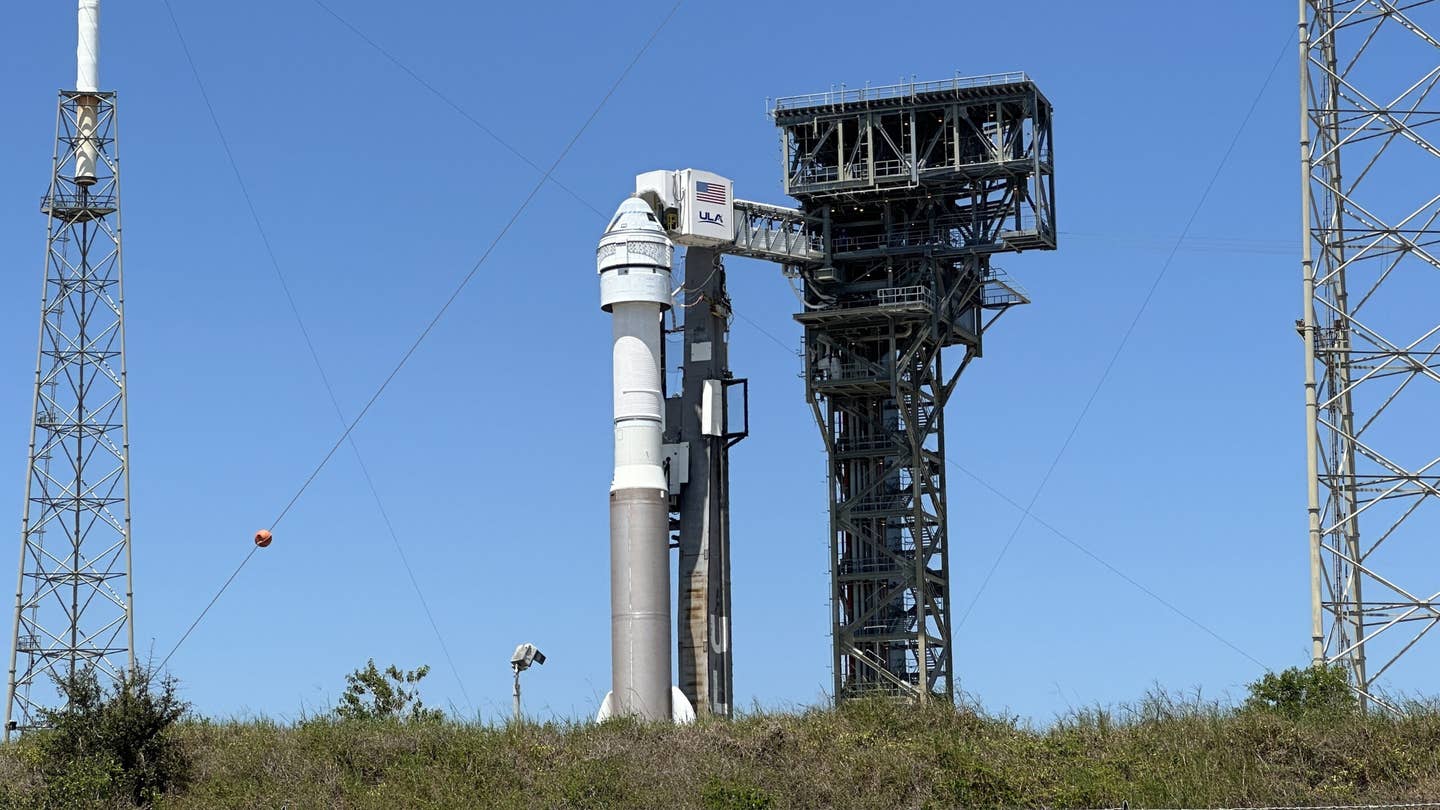Boeing, NASA Take Calculated Risk with Upcoming Starliner Launch
Starliner crews are contending with what NASA describes as a ‘design vulnerability’ that could prevent the spacecraft from performing a deorbit burn.

NASA, Boeing, and ULA rolled Starliner and the Atlas V rocket back to the pad at Space Launch Complex-41 at Cape Canaveral Space Force Station in Florida on Thursday. [Courtesy: Joey Jetton/Boeing Space]
What NASA describes as a “design vulnerability” in Boeing’s Starliner capsule—a semireusable vessel to low-Earth orbit that the agency is considering for Commercial Crew rotation missions to the International Space Station (ISS)—won’t prevent teams from attempting to launch the spacecraft with humans onboard for the first time this weekend.
NASA and Boeing on Wednesday announced that the Starliner Crewed Flight Test (CFT), intended to be the spacecraft’s final dress rehearsal before the agency certifies it for service missions, is a “go” to proceed for 12:25 p.m. EDT on Saturday, June 1.
However, Starliner engineers during a press conference last week said that a design flaw with the spacecraft’s propulsion system gives the capsule a 0.77 percent chance of being unable to perform a deorbit burn after it returns from the ISS. A deorbit burn, in which the vehicle reverses direction and fires its orbital maneuvering engines to slow itself, is used to maneuver a spacecraft back into Earth’s atmosphere.
NASA, Boeing, and launch provider United Launch Alliance, a joint venture between Boeing and Lockheed Martin, are taking a calculated risk with the launch attempt following years of delays to the Starliner program. The setbacks have resulted from a combination of issues involving the spacecraft’s software, propulsion system, and parachutes.
Boeing and rival SpaceX each have multibillion-dollar contracts with the space agency to provide crew rotation services. But all eight missions to the ISS to date have been flown using SpaceX’s Crew Dragon, which like Starliner is a reusable capsule designed to accommodate up to seven passengers.
Starliner in 2019 and 2022 attempted two uncrewed test flights to the ISS, the first aborted and the second successful.
The capsule’s first crewed mission has been delayed a number of times since an initial launch attempt scheduled for May 6 was scrubbed due to an issue with ULA’s Atlas V launch vehicle. Following that setback, engineers discovered a small helium leak on the Starliner capsule itself, tracing it to one of 28 reaction control system thrusters on the spacecraft’s service module.
“This is a high-pressure system, and helium is a very small, tiny molecule, and it tends to leak,” said Steve Stich, manager of NASA’s Commercial Crew program, last week. “This particular leak, I don’t think it implicates the design of the seal or the flange. It’s just maybe a defective part.”
Rather than replace the faulty valve, which would involve removing Starliner from the Atlas V rocket and could take several months, crews decided to try and better understand the flaw.
According to Stich, Starliner could actually weather a complete rupture in the valve’s seal, even if additional helium leaks spring up elsewhere.
“We could handle this particular leak if that leak rate were to grow even up to 100 times,” he said.
The leak is now described as stable, and Stich noted that SpaceX’s Dragon has also encountered leaks, which did not impact operations. But in the course of investigating the issue, teams uncovered yet another problem.
“We found a design vulnerability…in the [propulsion] system as we analyzed this particular helium leak, where for certain failure cases that are very remote, we didn't have the capability to execute the deorbit burn with redundancy,” said Stich.
In what Stich described as “a pretty diabolical case where you would lose two helium manifolds in two separate doghouses, and then they have to be next to each other”—referring to the aforementioned 0.77 percent figure—Starliner could be unable to perform a deorbit burn. Engineers said they have come up with a contingency plan that has already been tested by NASA astronauts Suni Williams and Butch Wilmore in a Starliner simulator.
“We have multiple redundancies in our system,” Mark Nappi, vice president of Boeing and program manager for Starliner, said last week. “We have a case here that’s extremely remote that we missed. And if there are more out there, they’re going to be in that same category of extremely remote.”
Though the issue hasn’t entirely gone away, Starliner teams appear committed to a launch on Saturday.
NASA, Boeing, and ULA on Wednesday completed a Delta-Agency Flight Test Readiness Review, determining that all Starliner systems, facilities, and teams are ready for launch. On Thursday, crews rolled Atlas V and Starliner back to the pad at Space Launch Complex-41 at Cape Canaveral Space Force Station in Florida, further signaling their intent to move forward with the attempt.
NASA will provide live coverage of the mission on its website, app, and YouTube channel. If all goes according to plan, Starliner, carrying Wilmore and Williams, will dock to the ISS’s Harmony module Sunday afternoon. The astronauts would then spend about one week on the orbital laboratory, where they will test the capsule’s systems in order to advance the certification process.
NASA hopes to get Starliner into its Commercial Crew rotation with the Starliner-1 service mission, scheduled for no earlier than 2025. After that, it would alternate six-month missions to the ISS with SpaceX’s Dragon.
U.S. Space Force meteorologists on Friday said there is a 90 percent chance that weather conditions will meet the criteria for a safe launch. Should the attempt be scrubbed again, backup launch windows are scheduled for Sunday, June 2, Wednesday, June 5, and Thursday, June 6.
Like this story? We think you'll also like the Future of FLYING newsletter sent every Thursday afternoon. Sign up now.

Subscribe to Our Newsletter
Get the latest FLYING stories delivered directly to your inbox






